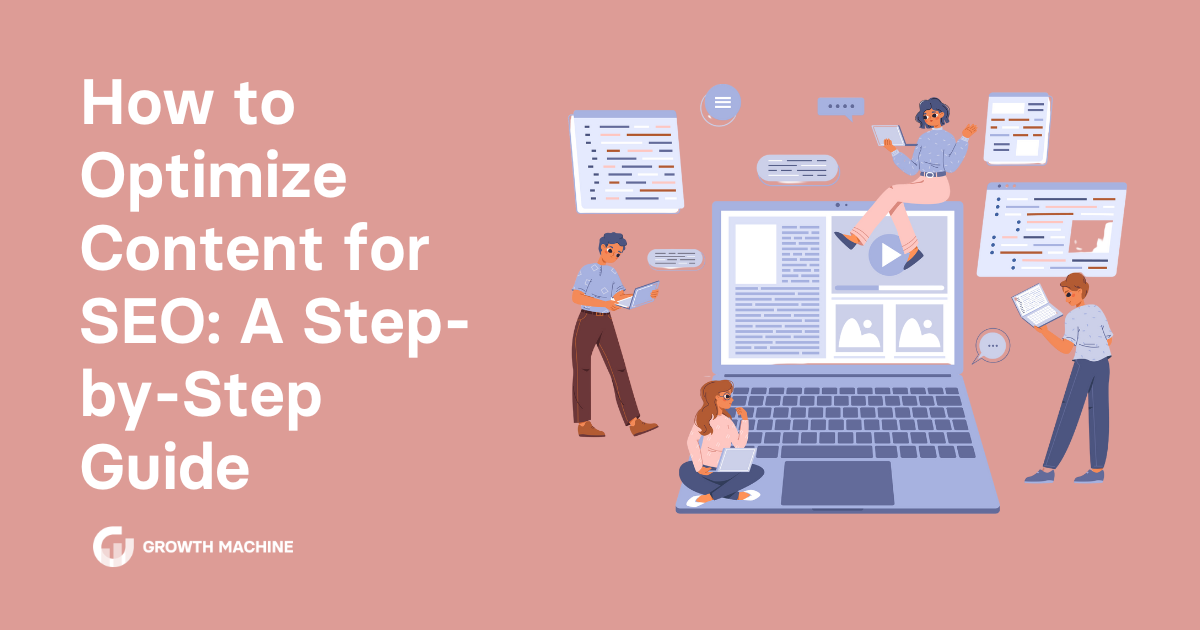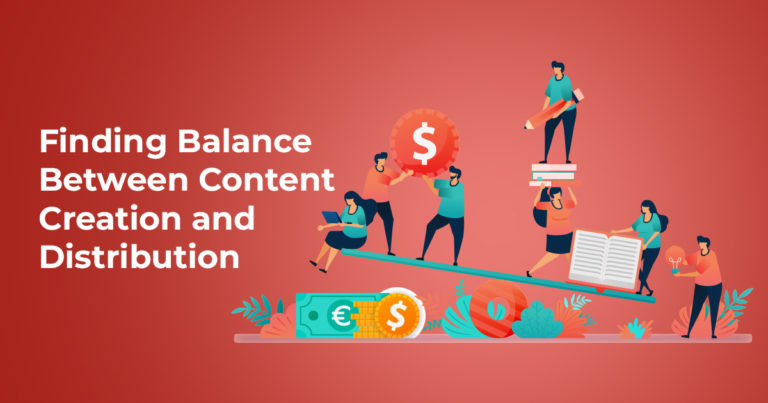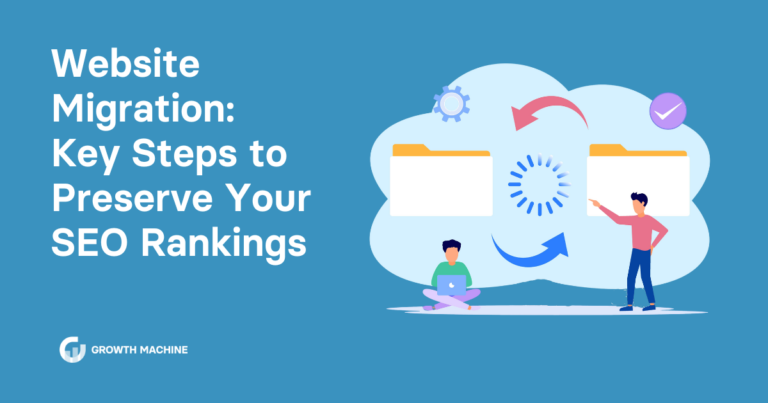How to Optimize Content for SEO: A Step-by-Step Guide
It’s frustrating when you create high-quality content but it doesn’t rank as well as you hope on Google nor attract a significant amount of traffic. Without visitors to your website, you’re unable to achieve your content marketing goals, like increasing brand awareness with top-of-the-funnel content or conversions at the bottom of the funnel.
Content optimization is the answer to this problem. It’s a method of enhancing a piece of content to better meet the needs of readers and search engines to improve overall content performance.
In this article, we’ll explain the meaning and importance of content optimization. You’ll learn how to optimize content step by step to dramatically improve your rankings on the search engine results pages (SERPs) and therefore increase website traffic.
What Is Content Optimization?
Content optimization is the process of strategically revising blog content to improve search engine rankings. You need to send the right signals to Google to prove that your content is high-quality, credible, and worthy of ranking well on the SERPs. The higher your rank on Google, the more likely people are to see your page, click, and visit your website.
A truly great content optimization strategy incorporates keyword research, technical search engine optimization (SEO), and configuring the composition and content of a blog post. The purpose is to help Google’s bots, called crawlers, understand the content easily so they serve it up as an organic search result to the right users at the right time.
Why Optimizing Content Is Worth It
When you refresh your content, your organic traffic can increase by 111%. Content optimization is a protocol you have to complete for your content to get the visibility it deserves, ideally on the first page of the search engine.
Google bots crawl your pages and index them in a gargantuan database. These crawlers pick up on signals such as title tags and linking structures to understand your content, its purpose, and its quality level. If you fail to send these signals to Google, your content won’t rank well even if you believe it’s amazing.
Optimize Content in 6 Simple Steps
Here’s a detailed look at the steps we follow to optimize content and achieve outstanding results for our clients.
1. Perform Keyword Research
Keywords are the terms users actually search for in Google. Every blog post should have a high-level target keyword that you intend to rank for plus semantically related, relevant keywords that give Google the context to better understand what the blog post is about.
Use an SEO tool such as Semrush or Ahrefs to determine a target keyword according to key metrics like search volume, the average number of monthly searches a keyword receives, and keyword difficulty.
When you write your article on this keyword, avoid sacrificing the quality of a blog post to include the keyword a ton of times in unnatural places. This is called keyword stuffing, and it’s penalized by Google. It’ll negatively impact your search engine rankings. Instead, optimize content by integrating keywords in a subheading or two and throughout the text where they make sense and appear natural to the reader.
2. Optimize Content for Search Intent
Google’s algorithm is great at understanding what kinds of results searchers want to see when they search for a particular keyword or keyphrase. As a brand, you need to understand it too — it’s called search intent.
There are four types of search intent:
- Informational: This super-popular search type is when someone is looking for an answer to a question or wants educational content, for example, “how to pay off credit card debt” or “apple crumble recipe”
- Navigational: When you don’t feel like fiddling with a specific URL and are trying to find a certain web page or brand, you do a navigational search, for example, looking up “Sephora” to reach Sephora’s site
- Commercial: A commercial search happens when someone is almost ready to purchase something and is researching products or services, like “best carry-on luggage 2023”
- Transactional: Transactional searches are when someone is ready to buy and is looking up the exact product they want to purchase, like “Breville Barista Express”
Most blog content fulfills informational or commercial intent. Match the content format of a blog post to a keyword’s intent. For instance, a guide or how-to post aligns well with informational searches like “tips for selling your house,” whereas a list or review is better matched to commercial searches like “best car seats for toddlers.”
Analyze the content that already ranks well for a given search term on Google. It indicates the best content format and information Google wants to reward with a high ranking. Use this information as a guide when you optimize content for the search engines.
Hint: Look to the People Also Ask box and related searches on the SERPs to ensure you cover a topic comprehensively and provide users with all the information they may be looking for when searching for that term.
3. Add Internal Links and External Links
Internal links help search engines contextualize blog content and establish a site structure, plus it keeps readers on your website for longer. Google’s PageRank algorithm also means a page passes some authority to any other page it’s linked to.
So it’s vital you establish robust internal linking as a part of your SEO strategy. Organize blog posts into clusters related to the same topic. Create a pillar page for each of your main topics — for instance, a paleo food blog could have a library of content around each of these 6 pillars:
- Snacks
- Breakfast
- Lunches & dinners
- Workouts
- Supplements
- Health
Under each pillar’s landing page, you can write dozens of articles about the main topic then link out from it to other cluster content. We link to at least three other internal blog posts when we optimize content for our clients. This provides an in-depth coverage of relevant sub-topics and helps readers find what they need.
External links have the power to increase or decrease the credibility of your content. When you only link out to trustworthy, relevant sources, you signal to Google that your content was expertly created. The opposite is also true — link to spammy, low-authority sites and you signal your content is of the same ilk.
4. Add a Relevant Title Tag
A title tag is simply the HTML code that produces the headline for your blog post, appearing as <title>Insert Headline Here</title>. It’s a known ranking factor and one of the easiest ways to optimize content and make Google understand what your blog post is about.
To optimize the title tag, make sure it’s entirely relevant to the search query. Users should be able to tell at a glance what they will find when they click.
Readers will be sifting through dozens of Google results to pick the one they want to click on, and competition is fierce. “Dog Food Tips” almost guarantees a scroll past, but “6 Ingredients to Avoid in Dog Food for Large Breeds” is informative and makes you want to click. Keep it concise at 50-60 characters (our example is 51), otherwise your title tag will be cut off when it’s displayed in the SERPs.
If you’re struggling to get creative, use a proven headline formula to make your title tag more appealing. Legendary copywriter Joanna Wiebe suggests:
- “The Only Way to [Do Something Desirable] Without [Doing Something Undesirable]”, for example, “The Only Way to Make Cold Brew Without Steeping It Overnight”
- “[Do Something Desirable] Like [an Expert] Without [Something Expected & Undesirable]”, for example, “Change Your Oil Like a Mechanic Without Ruining Your Car”
5. Write a Compelling Meta Description
A meta description is the snippet of text you see under the title tag on the SERPs or social media posts. This metadata is like a store window, compelling users to click and look inside.
Write meta descriptions to get more clicks with benefit-driven copy. Establish what the user will gain or learn when they click. But remember you can’t display something in the window that you don’t actually offer. The description must be accurate or users will return to the search engine quickly. The frequency of people clicking off your page is called bounce rate. A bad bounce rate indicates a negative user experience to Google, which you may be penalized for.
To ensure the meta description is relevant to the content within, consider the search intent of the post. Include your target keyword and describe what type of content they’ll find when they click, like, “A simple step-by-step guide to getting out of credit card debt, including why you should avoid one method that will lower your credit score.”
Meta descriptions should hover around 140-160 characters, depending on what your blog allows. For example, WordPress allows 141 characters while Webflow lets you use 160.
6. Optimize Content to Attract Backlinks
Google Search Quality Senior Strategist Andrey Lipattsev confirmed that “content and links pointing to your site” are the two most important ranking factors. If a credible site is willing to link to your content then it must be high quality.
We offer a number of effective link building techniques, such as broken link building and guest posting. When paired with optimization and new content creation that’s worthy of backlinks, this combination has yielded impressive results for our clients.
Create the go-to resource on a topic to make it link-worthy. Ensure it’s thorough and better than competitor blog posts. Attract more links using unique visuals, such as infographics, that others may want to utilize.
You could also optimize content by incorporating original research or interviews that can’t be found elsewhere. If another site or blogger wants to reference your material they have to cite your blog post as the original source and therefore link back to you.
Adopt a Content Optimization Strategy for Your Business
Content optimization is a necessary process to increase the visibility of your content in search engines and drive more organic traffic to your site. If you fail to optimize content for SEO, your rankings will likely drop significantly. Optimizing just a few posts per month can really boost your content efforts if you do it right.
But we get it — with a ton of other digital marketing strategies on your plate, optimizing content can go last on the to-do list. Proving the quality and credibility of your blog posts to Google is an ongoing, weekly commitment. So, outsource it to people who live and breathe content optimization every day.
Growth Machine can boost your brand’s SEO rankings through identifying which blog posts would work well for optimization and using subject matter experts to give your articles a makeover. Connect with our SEO experts to see how we can help you achieve your marketing goals.







